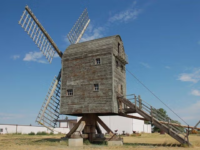Nikka Yuko Japanese Garden facility good investment for City
By Lethbridge Herald Opinon on June 3, 2020.
Trina Tymko, Kimberly Lyall
and Barrie Orich
Board members,
Lethbridge Transparency Council
In 2017, Lethbridge City Council approved the Nikka Yuko Japanese Garden Program and Community Facility (Facility) as part of the Capital Improvement Program (CIP). On April 6, council defeated a motion to discontinue the project, thereby keeping the project in the current CIP budget.
Reaction to council’s decision was swift, with many in Lethbridge crying foul over spending during a time of economic uncertainty and COVID-19. So, the LTC investigated. Here is what we learned.
Facility cost: $2.9 Million
Funding sources:
– Federal Gas Tax Fund (GTF): $2,538,000 (87 per cent);
– City of Lethbridge: $292,000 (10 per cent); and
– Nikka Yuko Japanese Garden Society (NYJGS): $90,000 (3 per cent)
Since 2017 the NYJGS has also raised an additional $120,500 to be used for furniture, fixtures and equipment including exhibit design and implementation. In addition to the above, the NYJGS has already contributed $20,000 and six years of planning and co-ordination into the project with the City. Thus, the NYJGS’s financial commitment to date totals $230,500.
The City is paying a fraction of the cost, while bringing over $2.5 million into Lethbridge. The GTF can only be used for new construction (CIP), so options for these funds are limited. The City of Lethbridge has spent approximately $210,000 of their $292,000 contribution towards the project to this point.
Why is the NYJGS not constructing the facility themselves? They proposed that option, but Nikka Yuko Japanese Garden is located in Henderson Lake Park, all of which is City property. The City will own the new facility and the NYJGS will operate it.
Why is the new facility needed?
A little background is helpful. The NYJGS is a not-for-profit society that exists to provide education and programming about the Garden, and the important contributions of Japanese Canadians to southern Alberta. Over the past four years, visitors to the Garden have increased by 333 per cent (from 12,000 visitors to an average of 40,000 visitors) due to expanded programming, including the successful Winter Lights Festival. The Garden is rated by Trip Advisor as Lethbridge’s top attraction (https://www.tripadvisor.ca/Attractions-g154919-Activities-Lethbridge_Alberta.html), and is the most recognizable of Lethbridge’s tourism offerings.
The estimated economic impact to Lethbridge from tourists visiting the Garden is $1.1 million annually. (Source: Visitor Expenditure Characteristics https://www.alberta.ca/Alberta-visitor-profiles.aspx/ and Nikka Yuko Japanese Garden visitor statistics.)
Currently 53 per cent of the annual operating budget for the Garden Society comes from the City. The rest of their budget is earned through admissions, souvenir sales and fundraising. According to Michelle Day, executive director of the Nikka Yuko Japanese Garden, the Society wants to be less reliant on the City of Lethbridge for operational funding. To achieve this, the NYJGS needs space to operate its programs and special events year-round, and regardless of weather.
Currently, admissions and programs are at the mercy of the weather. Guided tours are limited in numbers, and in the size of groups that can be accommodated. The original Tea House is not heated in the winter months and was not designed for daily activities or large groups. The Visitor Centre houses the only year-round washrooms on site and has just enough space for souvenir sales and a single office. There is not even enough space for year-round Garden staff or a meeting room on site. Existing Garden facilities are maxed out.
The new Facility will be approximately 465 square metres and provide space year-round for:
– Cultural, historical and horticultural exhibits and programming;
– Events and meetings for public and private functions in the Garden, Park or Community; and
– Publicly accessible washrooms.
Aside from the 10 per cent contribution from the City for Facility construction, the Society has asked for a one-time additional support of $99,000, over and above annual funding, to assist with the transition in operations in the first year of the new facility. After that, they will reassess the funds they need from the City in the next budget cycle, with the intent to reduce their ask.
Councillor Belinda Crowson noted during the recent debate that the NYJGS operates Nikka Yuko Japanese Garden for far less cost than if the City were to run operations itself.
Given the evidence, it appears that the facility is a good investment that will bring outside dollars into our community and decrease ongoing civic costs for operations, while continuing the respectful relationship we have with those of Japanese ancestry and our “unique history.”
The LTC will continue to seek transparency on Municipal Government expenditures and decisions.
For more factual information on the above, including supporting documents, please visit http://www.TransparencyCouncil.com.
30-29




